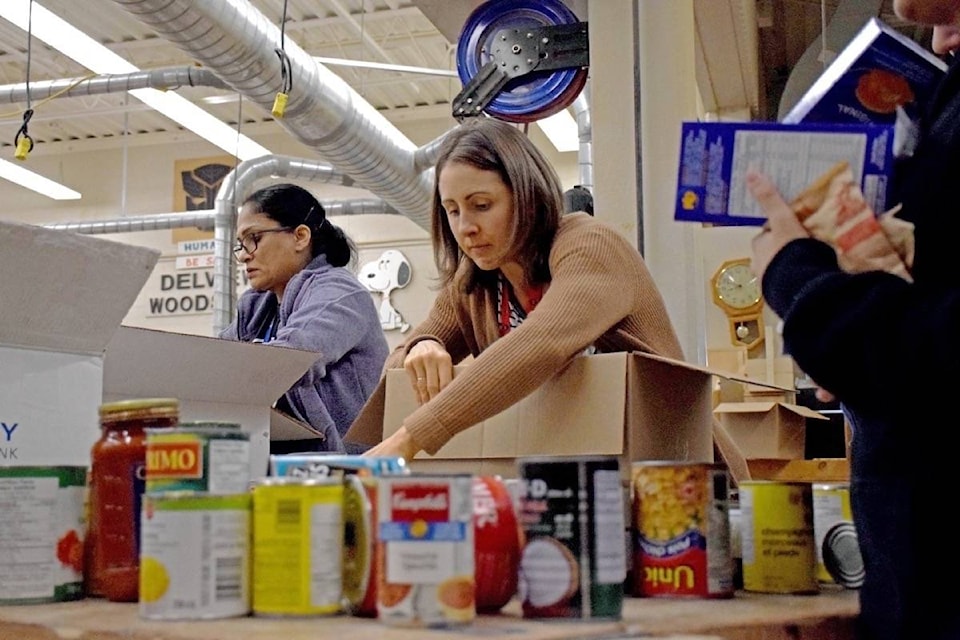The first food bank I ever visited was one I went there to photograph. I was a first-year journalism student, armed with a borrowed Canon AE1, a fresh roll of TMax film, and a desire to get something “edgy.”
It was a tiny food bank, given the size of the city it served. But it was bustling. Behind the counter, volunteers scurried to fill and sort hampers. People patiently waited in line – their moods a mix of hope and apprehension.
The picture I came away with was of a middle-aged man, his one elbow propped on the countertop, his forehead cradled in his hand so his eyes were partly covered from my camera’s prying lens.
That photo has long since disappeared, but the memory has never faded.
ALSO READ:
As someone who grew up in the sheltered comfort of suburbia, I didn’t have a lot of experience with food banks. I hoped they were an aberration of the mid-’80s economic recession, but I was wrong.
Today, food banks are hardly a rarity. They can be found in every B.C. community – something that becomes even more obvious around Christmas time. Venture anywhere and you are reminded of the need to stock those shelves or offer financial support.
And the need is great.
In B.C., it is estimated 80,000 people rely on food banks every month, according to Food Banks BC.
Nationwide, that number grows to 1.1 million– one-third of them children, according to a study released by Food Banks Canada earlier this year.
So who are these people? Nearly half are people living alone, struggling to pay bills, afford rent and buy groceries. A growing number are seniors (11,000), people living with disabilities, or counting on social assistance.
Often food bank use is only temporary – a bridge to overcome an unexpected financial crisis, or to free up money for other priorities (like Christmas gifts for the kids).
Since the mid-’80, food bank use has grown, but it has also changed. Food programs now help feed hungry children at school, or educate their parents in community programs that show them how to prepare healthy and economical meals.
But the biggest change is the most innovative.
Once upon a time, canned goods and dried pasta dominated food bank shelves. The problem was storage. Food banks lacked the facilities to handle perishable products.
That began changing a few years ago with the launch of Food Bank BC’s “Perishable Food Recovery Program.”
With the help of a $10-million government grant, nearly 90 food banks in the province were retrofitted to provide refrigerator and freezer space to accommodate fresh fruit and vegetables, dairy products and foods rich in protein.
Then, through a partnership with major grocery chains, local farmers and other distributors, the program was able to divert food that would otherwise be thrown away.
The food is perfectly edible. It is simply approaching its best-before date, or doesn’t meet the aesthetic demands of fussy shoppers.
It is a classic win-win. More food (fresher and more nutritious) gets to those who need it, and less (an estimated $6-billion worth) goes into landfills.
Of course, food banks still need our support. And not just at Christmas time. Hunger and food insecurity might seem more obvious this time of year, but they are always present in our communities.
So, yes, make that donation. But remember, the need is there long after the decorations have been put away and the red kettle bells go silent.
Greg Knill is a columnist and former Black Press editor. Email him at greg.knill@blackpress.ca
Like us on and follow us on .

.png;w=120;h=80;mode=crop)

